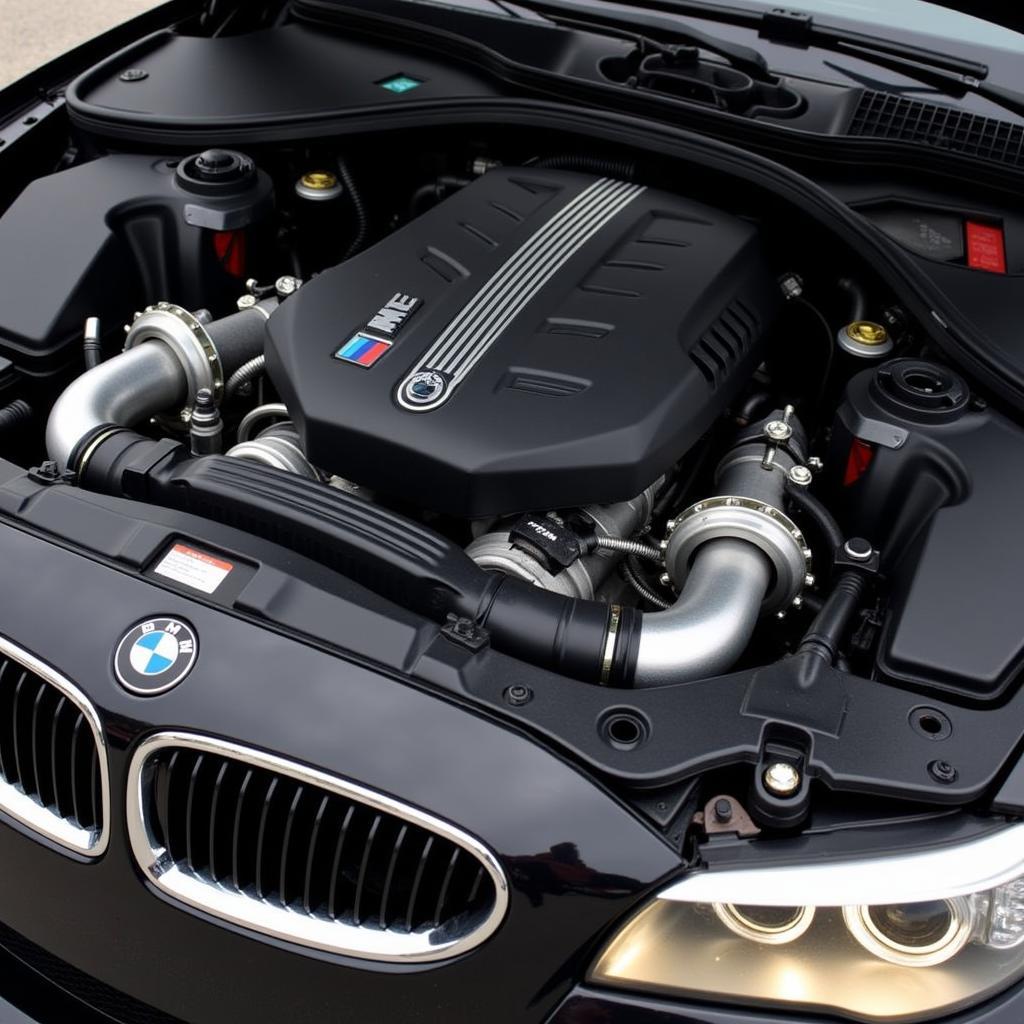The 2013 BMW M5 sound is a topic that sparks interest among car enthusiasts, owners, and potential buyers. This guide delves into the intricacies of the M5’s auditory profile, covering everything from the engine’s natural roar to the influence of the sound system and potential issues that can arise.
Understanding the sound of a 2013 BMW M5 goes beyond just appreciating a powerful engine. It’s about recognizing the symphony of engineering that creates a unique driving experience. The twin-turbo V8 engine, while undeniably powerful, also produces a distinct sound signature that differentiates it from other high-performance vehicles. This sound is further shaped by the exhaust system, designed to amplify and refine the engine’s notes, creating a thrilling auditory experience for both the driver and passengers. Beyond the mechanical components, the 2013 BMW M5 often includes features like Active Sound Design, which electronically enhances and transmits the engine’s sound into the cabin. This technology adds another layer to the sound experience, allowing drivers to customize and intensify the auditory feedback they receive. However, this system, along with the complex sound system itself, can sometimes encounter issues that affect the overall sound quality. Troubleshooting these issues requires a deep understanding of the car’s audio architecture.
Exploring the 2013 BMW M5 Engine Sound
The heart of the 2013 BMW M5’s sound is its 4.4-liter twin-turbo V8 engine. This engine produces a deep, resonant rumble at idle, evolving into a powerful roar as the RPMs climb. This distinct sound is a product of the engine’s firing order, the design of the intake and exhaust manifolds, and the turbochargers themselves. While the turbos can sometimes muffle the raw sound of the engine, they also contribute a unique whooshing sound under acceleration, adding to the overall auditory experience.
 2013 BMW M5 Engine Bay Showing Twin-Turbo V8
2013 BMW M5 Engine Bay Showing Twin-Turbo V8
The Role of the Exhaust System in Shaping the Sound
The exhaust system plays a crucial role in refining and amplifying the engine’s raw sound. The 2013 BMW M5 typically features a complex exhaust system with mufflers and resonators designed to balance performance and sound quality. The system is engineered to minimize unwanted drone at cruising speeds while maximizing the aggressive roar under hard acceleration. Some owners even opt for aftermarket exhaust systems to further personalize the sound of their M5. This is similar to the 2013 bmw m5 exhaust sound through speakers feature, as both influence the driver’s experience of the car’s sound.
Common Exhaust Issues and Solutions
Over time, exhaust components can wear out or become damaged, affecting the sound and performance of the vehicle. Common issues include leaks, damaged mufflers, and rattling heat shields. Diagnosing these problems requires careful inspection and listening for unusual noises.
Understanding BMW Active Sound Design
BMW Active Sound Design is a technology that electronically enhances and transmits the engine’s sound into the cabin. This system uses microphones and speakers to create a more immersive driving experience. The intensity of the sound can often be adjusted through the car’s infotainment system, allowing drivers to customize their auditory experience. You can learn more about what is bmw active sound design on our website.
Troubleshooting Active Sound Design Problems
Sometimes, the Active Sound Design system can malfunction, leading to distorted or absent engine sounds inside the cabin. This can be caused by software glitches, faulty speakers, or wiring problems. Diagnosing these issues requires specialized diagnostic tools and expertise in automotive electronics. This relates to the broader topic of the 2013 bmw m5 sound system, which covers various aspects of the car’s audio setup.
The Overall 2013 BMW M5 Sound Experience
The 2013 BMW M5 offers a compelling sound experience that blends the raw power of its V8 engine with sophisticated technology. Understanding the interplay between the engine, exhaust system, and Active Sound Design is key to appreciating the car’s unique auditory character. For more information about the M series sound in general, you can check out our article on bmw m exhaust sound.
 Interior of a BMW M5 Showing Infotainment System
Interior of a BMW M5 Showing Infotainment System
Conclusion
The 2013 BMW M5 sound is a complex and fascinating aspect of this high-performance vehicle. By understanding its various components and potential issues, owners and enthusiasts can fully appreciate the engineering marvel that creates this unique auditory signature. Learn more about what is bmw active sound on our comprehensive guide.
FAQ
- What engine is in the 2013 BMW M5? A 4.4-liter twin-turbo V8 engine.
- What is BMW Active Sound Design? A system that enhances and transmits engine sound into the cabin.
- Can I modify the exhaust on my 2013 BMW M5? Yes, aftermarket exhaust systems are available.
- What causes a rattling sound from the exhaust? Often a loose heat shield or damaged component.
- How do I troubleshoot Active Sound Design issues? Specialized diagnostic tools are often required.
- What is the typical sound of a 2013 BMW M5? A deep rumble at idle, evolving into a roar under acceleration.
- How can I maintain the sound quality of my M5’s exhaust? Regular inspections and maintenance are crucial.
For any further assistance, please contact us via WhatsApp: +1 (641) 206-8880, Email: [email protected] or visit us at 276 Reock St, City of Orange, NJ 07050, United States. Our customer service team is available 24/7.


